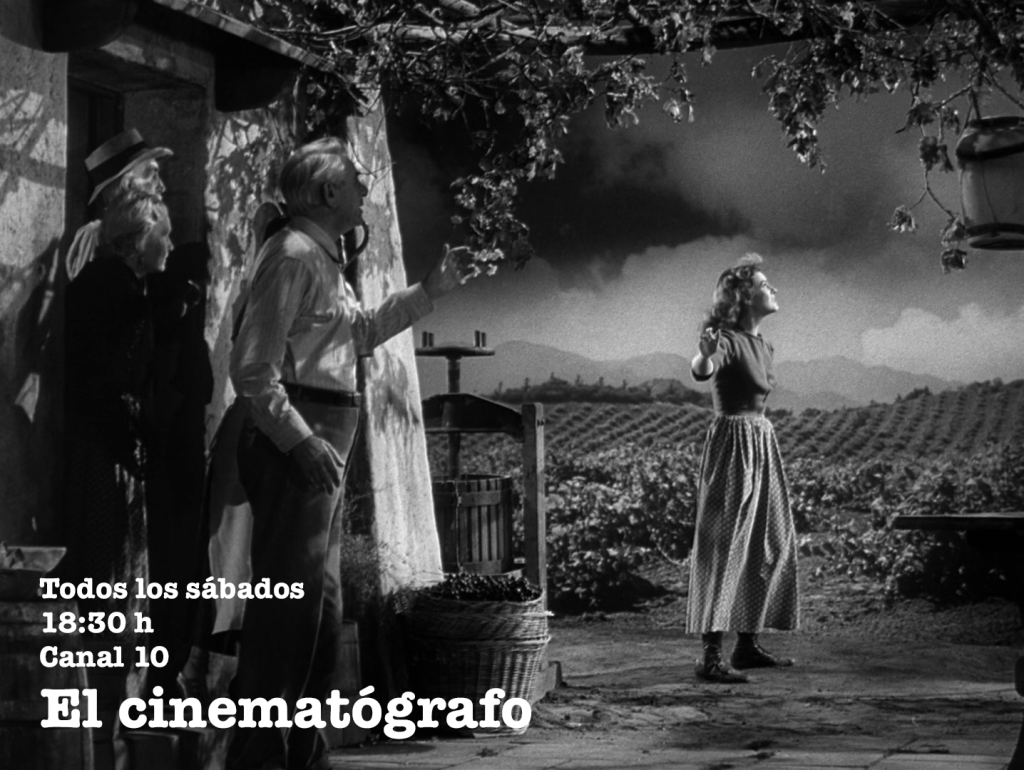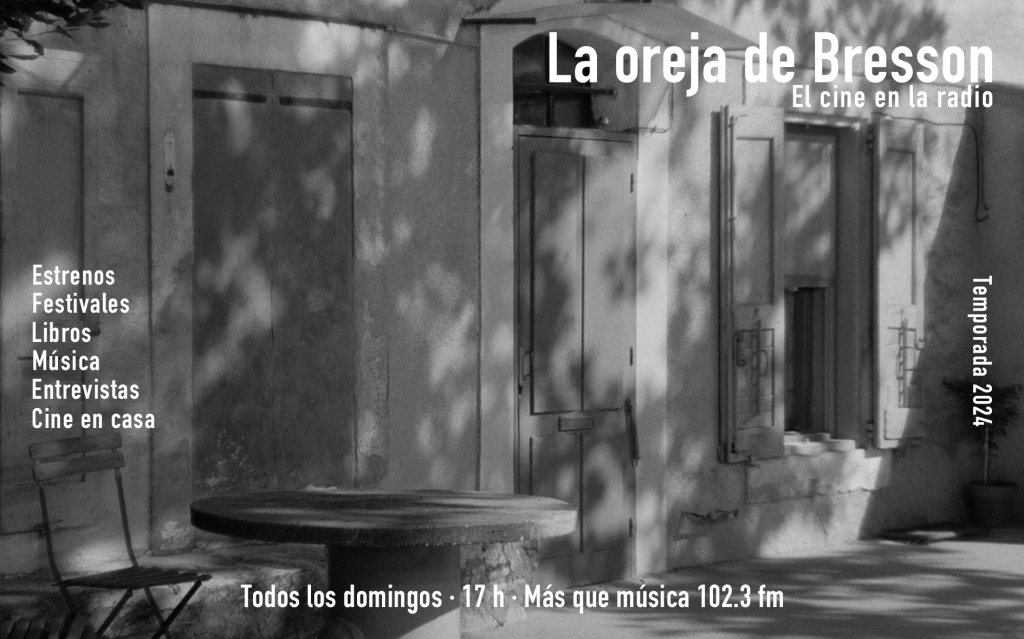
LUCRECIA’S HEARING
Right from the start, Lucrecia Martel sensed that the chore of her poetics didn’t lay on perfect frames and a masterful use of lighting, nor even on her clear command of narrative but, rather, on the not-yet-codified aural nature of cinema.
As it happens in philosophy, and in everyday speech, filmic vocabulary teems with visual terms and there are more than enough words to identify the way an image operates. The same doesn’t apply when it comes to sounds. Filmmakers are excessively attracted towards the light and they assume their art is defined by the modalities of vision. However, there are a few who are suspicious of such conceited sovereignty of the image and feel that cinema’s complete power happens only when sound—a debased element right from the start, due to an unfortunate technical impossibility—is allowed to counterbalance the certitude of visual representation.
Martel is part of that minority tribe of filmmakers who understand sound as a matter that pertains not only to technicians and machines, nor as a mere naturalistic complement to images. Sound represents a demanding ontology because it is a sign of reality less prone to fall under the dominion of language; or, at least, it is the most unstable expression of the world and its outward appearances. Images are fixated, sounds propagate. That is why any filmmaker able to use this dialectic relation is also able to intensify the expressive possibilities of cinema. And, within this field, Martel shines as only a few are able. Martel sees through her ears.
There’s nothing more unique than the opening five minutes in La ciénaga, where a whole poetics is displayed with phenomenal conviction; a thunder is heard as we see a panoramic shot of the mountains in the province of Salta, then, a long shot with depth of field shows a bunch of red peppers in contrast to the mountainous background, until we read the opening credits.
Immediately after that, the visual field is overtaken by several empty glasses and a hand holding a wine bottle, pouring its contents over a cup until it is filled. In terms of the sound, the pouring wine is completely in the foreground, together with the sounds of ice as they are stirred by the hand holding the cup. The whole scene happens by a swimming pool, a symbolic trope often seen in Martel’s films—swimming pools bring together both the putrefaction of stale water and the vitality of this vital and irreplaceable liquid. We see many people in the shot, but none of them is individualized. These are depersonalized bodies, as if we were watching zombies. Suddenly, these men and women drag the deck chairs they were lying on and the sound becomes more powerful and autonomous, almost to an unbearable level.
After such a magnificent sound orchestration, which ingrains the ominous quality of the world, the film’s title appears and, then, the first sequence revolves around a girl uttering a prayer. The content of the prayer itself is less relevant than the intimate, musical quality of its sound. Just before the girl, we see two shots of the room in which she lies. The sound of her prayer is replaced with sounds of a storm and the deck chairs as they are dragged, scratching against the floor. This is almost imperceptible, but the substitution is deliberate, as if it were a crossfading of sound.
This prodigious opening encapsulates the totality of Martel’s filmic work; a poetics pinned by sound backgrounds in tune with the emotional state of her characters, who are always part of a well-delimited community which is microscopically filmed. The sound background becomes an ontological cushion for the whole film, an area upon which the narrative exists. And then, the background takes as its model that gradual abandonment of consciousness just before the girl falls asleep. Perhaps, this has to do with the own memories of the director, used to those childhood moments just before taking a nap; smothering-hot afternoons in which a little girl falls asleep. And just before she dozes off, with her eyes closed, the sound levels expand; voices and noises become independent from their referents and the world loses some of its order. This is Martel’s poetical principle—to represent the world from an estranged consciousness, closer to the sensibility of dreams. Isn’t her film La niña santa a magnificent expanded dream? Wouldn’t it be possible to say the same about her other feature, La mujer sin cabeza? And the same can be said, too, about some of her short films, such as Rey muerto and Peces. Martel’s stories are somehow like those stories told to someone just before he or she falls asleep.
Martel’s subjects are precise; in La ciénaga she is interested only in portraying, impiously, the decadence of a social (upper) class. The apprehensive spiritual condition of upper-class rich people from Salta stands in contrast with those compliant servants who keep their households in order. A great deal of the tension in the tale has to do with the ways in which household owners relate to their service staff. The plot revolves around a series of brief anecdotes related to everyday life in a circumscribed territory where all characters are crowded together.
And although desire between people who are different from each other is one of La ciénaga’s subplots, in La niña santa is the central theme, presented as an examination of a desire pierced by a deliriant religious discourse over the background of a medical congress at a hotel in Salta. Here, the focus is not on relationships between different social classes but on intergenerational interactions and the ways in which desire is experienced. And—just as in her previous film—there is not a single, specific protagonist; rather, what is shown is a totality, a movement marked by Christian rhetoric at a scientific event.
And while La ciénaga is more of a sociological film, and La niña santa a theological—and perhaps even, secretly, psychological—one; in La mujer sin cabeza issues have more to do with morality and politics. At the beginning, a car crash—heard but not seen—defines all the behaviors and actions of the characters in a heterodox thriller where class privileges become relevant once again. An although in this film there actually is a presumed protagonist, whom we see struggling with the demands presented to her by her conscience, what really matters here is to guess the modus operandi of the members of the protagonist’s social class, which remain offscreen although have undeniable effects over the plot. Power is not seen in its practice, but in its effects.
Something has to be said, too, about Zama, a film which we’ve been waiting for many years. The evidences of it are that it is a period film and an adaptation from a literary work, and the plot drifts away from Martel’s usual universe of reference in Salta. Not many have seen the film and we know almost nothing about it. The trailer suggests a new stage in Martel’s films. Almost ten years have passed since her last feature. The premiere is close at hand and, then, we’ll have to keep on thinking about the work of a unique director who is always willing to take risks. That’s why Martel’s rebirth has the world of cinema in suspense—she is a colossal filmmaker.
*First published by Transatlantyk Festival in Poland in July and later on in Fipresci website in August 2017.
Stills: 1) La ciénaga; 2) La niña santa.
Roger Koza / Copyleft 2017






Últimos Comentarios